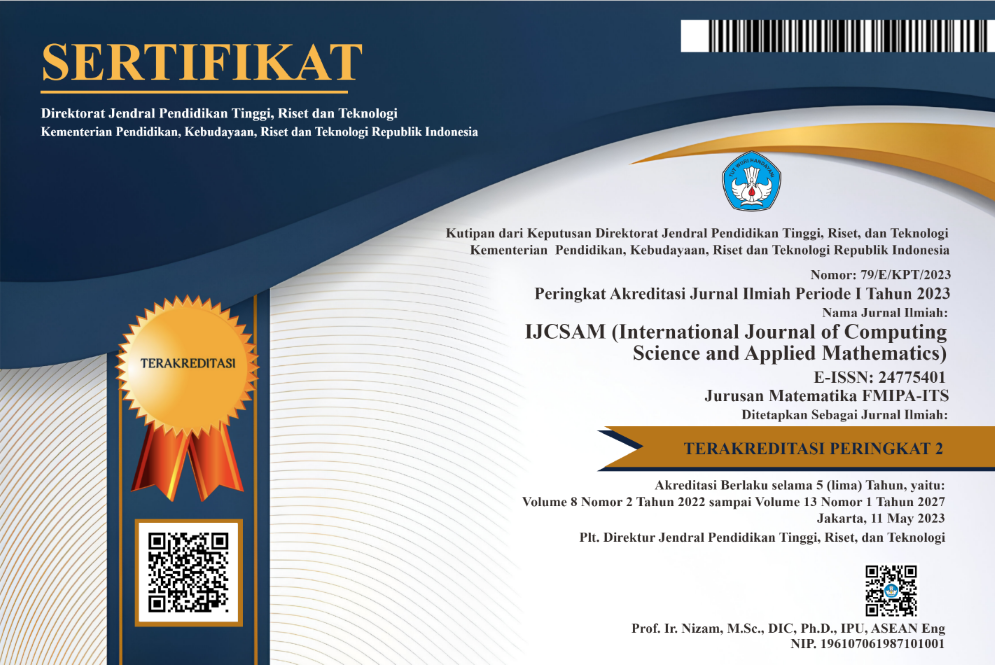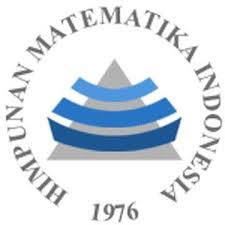Classification of Poverty Levels Using k-Nearest Neighbor and Learning Vector Quantization Methods
Abstract
Keywords
Full Text:
PDFReferences
CBS, “Analysis and calculation of poverty level in 2008,” Central Bureau of Statistics, Jakarta, Tech. Rep., 2008.
M. Jabbar, B. Deekshatulu, and P. Chandra, “Classification of heart disease using k- nearest neighbor and genetic algorithm,” Procedia Technology, vol. 10, pp. 85–94, 2013, first International Conference on Computational Intelligence: Modeling Techniques and Applications (CIMTA’13).
A. Karegowda, M. Jayaram, and A. Manjunath, “Cascading k-means clustering and k-nearest neighbor classifier for categorization of diabetic patients,” International Journal of Engineering and Advanced Technology, vol. 1, no. 3, pp. 147–151, 2012.
A. Nurkhozin, M. Irawan, and I. Mukhlash, “Komparasi hasil klasifikasi penyakit diabetes mellitus menggunakan jaringan syaraf tiruan backpropagation dan learning vector quantization,” in Prosiding Seminar Nasional Penelitian, Pendidikan dan Penerapan MIPA, 2011, pp. M33–M40.
M. Athoillah, M. Irawan, and E. Imah, “Study comparison of svm-, k-nn-and backpropagation-based classifier for image retrieval,” Jurnal Ilmu Komputer dan Informasi, vol. 8, no. 1, pp. 17–19, 2015.
E. Fix and J. Hodges Jr., “Discriminatory analysis-nonparametric discrimination: Small sample performance,” Report no. 4, USAF School of Aviation Medicine, Texas, Tech. Rep., 1951.
CBS, “Poverty data analysis based on data collection data social protection program in 2011,” Central Bureau of Statistics, Jakarta, Tech. Rep., 2012.
P.-N. Tan, M. Steinbach, and V. Kumar, Introduction to data mining. Pearson Addison Wesley, Boston, 2006.
E. Fix and J. Hodges Jr., “Discriminatory analysis-nonparametric discrimination: Small sample performance,” Report no. 11, USAF School of Aviation Medicine, Texas, Tech. Rep., 1952.
T. Cover and P. Hart, “Nearest neighbor pattern classification,” IEEE Transactions on Information Theory, vol. 13, no. 1, pp. 21–27, Jan. 1967.
J. Sreemathy and P. Balamurugan, “An efficient text classification using knn and naive bayesian,” International Journal on Computer Science and Engineering, vol. 4, no. 3, pp. 352–351, 2012.
L. Fausett, Fundamental of Neural Network: Architectures, Algorithms, and Aplications. Prentice Hall Inc, New Jersey, 1994.
DOI: http://dx.doi.org/10.12962%2Fj24775401.v2i1.1578
Refbacks
- There are currently no refbacks.
View My Stats

International Journal of Computing Science and Applied Mathematics by Pusat Publikasi Ilmiah LPPM, Institut Teknologi Sepuluh Nopember is licensed under a Creative Commons Attribution-ShareAlike 4.0 International License.
Based on a work at https://iptek.its.ac.id/index.php/ijcsam.






